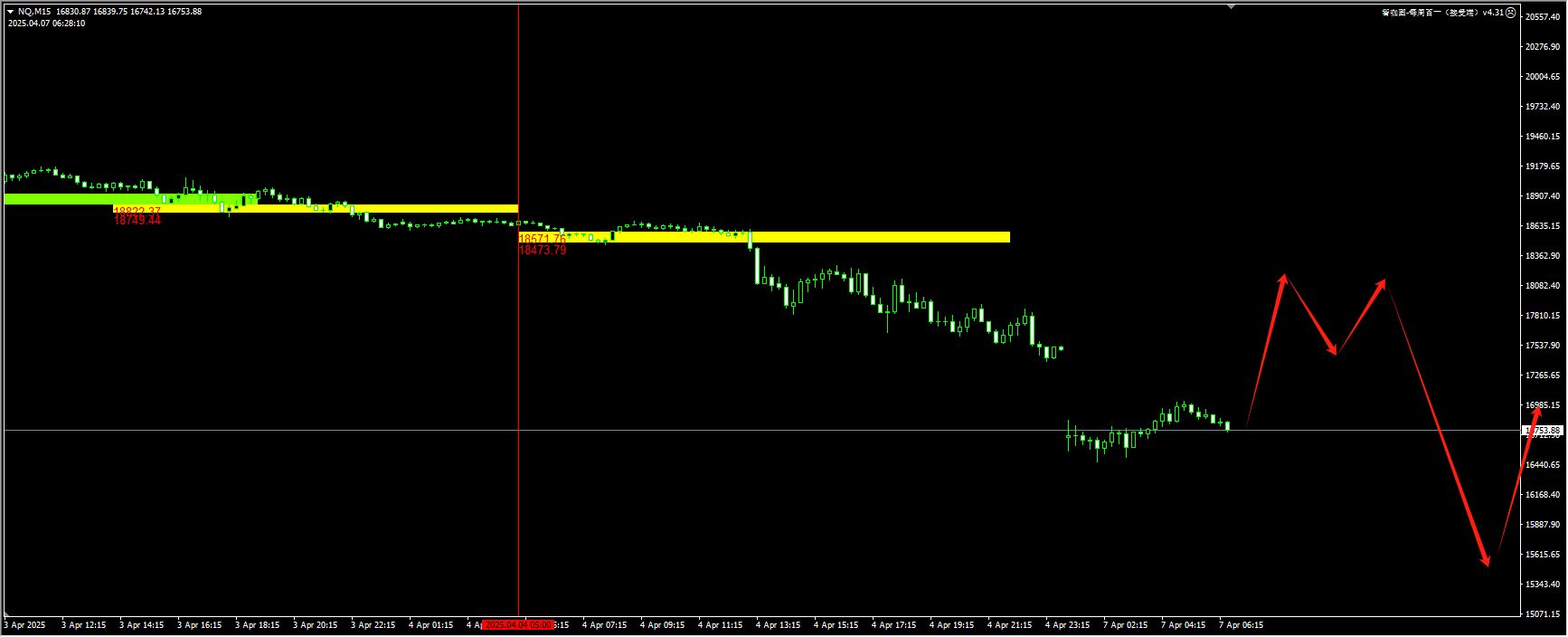After US officials expressed opposition to trade tariffs and said any negotiations on tariff cuts would be prolonged, traders sought safe-haven currencies, causing the Japanese yen and the Swiss franc to strengthen on Monday.
Risk aversion persisted for the second week, with the Japanese yen rising 1% against the US dollar to 145.41 and the Swiss franc climbing 0.7%. The Australian dollar fell 0.7%, leading the decline among major developed market currencies.
Over the weekend, US officials made little indication that President Trump was willing to abandon the reciprocal tariffs imposed last week, and risk aversion is spreading. Treasury Secretary Mnuchin said that the trade issue could not be resolved through negotiations in a few days or weeks.
The market crash triggered by Trump last week has gone down in history. The Nasdaq 100 index fell into a bear market; within two days, the market value of all US stocks evaporated by more than 5 trillion US dollars; commodity prices plunged, and corporate bond investors frantically bought insurance contracts to guard against default. Asian stock markets did not ease in the early trading on Monday, and stock index futures fell again. However, most of the losses occurred after Trump announced plans to impose tariffs of up to 50% on dozens of countries, a plan that was so aggressive that almost no one thought it was possible.
In early Asian trading, S&P 500 futures declined while U.S. Treasury futures rose.
Since Wednesday, investors have clearly been seeking refuge in the bond market as they bet that the US might fall into an economic recession. After Trump announced tariffs on US trading partners, yields on policy-sensitive US Treasuries once dropped by more than 0.4%.
This pushed the two-year Treasury yield close to 3.5% – the lowest level since September 2022. Meanwhile, the 10-year Treasury yield briefly fell below 4% for the first time since October. In the Asian session on Monday, the benchmark 10-year Treasury yield dropped as much as 11 basis points to 3.88%.
Daniel Ivascyn, chief investment officer of Pacific Investment Management Co., said: “We are in a period of extreme macro uncertainty. Given that inflation has risen and may continue to do so, the nature of this shock is different from those in the past few decades.”

“If Trump remains tough, we will face more risks,” said Nick Twidale, chief analyst at AT Global Markets in Sydney. “It’s not good for global trade that it will take months to reach an agreement, and it may not be what investors expected from a government that has rapidly lifted tariffs in recent months.”
As the escalating trade war between the United States and its partners has raised concerns over a global economic slowdown and stagflation in the world’s largest economy, investors have flocked to safe-haven assets. China’s retaliatory tariffs against the United States on Friday sent currency and stock market volatility soaring, with the U.S. stock market posting its biggest decline since March 2020.
Australian assets were hit the hardest as the small open economy relies on its trade links. The Australian dollar fell by the most since October 2008, while the country’s stock market also plunged sharply.
Chris Weston, the research director of Pepperstone Group based in Melbourne, said, “President Trump and Treasury Secretary Mnuchin seem both disturbed by the market’s reaction. The market will test their resolve this week.”
Technical analysis:
Gold: Due to the Chinese market being closed for the Qingming Festival, the external market has exerted a more significant downward pressure on the price, which dropped from above 3150 to a low of 2970. However, the price has started to rebound in the Asian session on Monday (April 7th). For today, attention should be paid to the new demand zone for a low buy signal. For detailed positions, please consult the plugin.

(Gold 15-minute chart)
The plugin is updated from 12:00 to 13:00 every trading day. If you want to experience the same plugin as shown in the chart, please contact V: Hana-fgfg.
The Nasdaq: Trump’s comprehensive tariff policy has created a sense of panic in the stock market, and the Nasdaq has officially entered a technical bear market. We expect that in the coming period, prices may maintain a volatile downward trend. In terms of strategy, the proportion of shorting during rebounds and going long on liquidity can be adjusted to 6:4. For detailed positions, please consult the plugin.

(NASDAQ 15-minute chart)
The plugin is updated from 12:00 to 13:00 every trading day. If you want to experience the same plugin as shown in the chart, please contact V: Hana-fgfg.
Crude oil: As Trump’s comprehensive tariffs are rolled out, market concerns over a US economic recession have intensified. If the latter were to occur, it would affect the total demand for crude oil. Therefore, the price has begun to seek support downward. Currently, the trend on the 4-hour chart is still under downward pressure, and bulls should observe appropriately. In the short term, it may continue to maintain a volatile and slightly downward trend. For detailed positions, please consult the plugin.

(Crude Oil 15-Minute Chart)
The plugin is updated from 12:00 to 13:00 every trading day. If you want to experience the same plugin as shown in the picture, please contact V:Hana-fgfg.
Today’s key financial data and events to focus on:
17:00 Eurozone retail sales for February
22:00 US Conference Board Employment Trends Index for March
At 22:30, the Bank of Canada will release the Business Outlook Survey and the Consumer Expectations Survey reports.
03:00 U.S. February Consumer Credit Change (in billions of dollars)

